Netflix’s Mindhunter dives deep into the early days of the FBI’s quest to understand the minds of serial killers, telling the story of how criminal profiling first took shape. Created by Joe Penhall and backed by heavyweights David Fincher and Charlize Theron, the show is based on the 1995 book Mindhunter: Inside the FBI’s Elite Serial Crime Unit. It was written by John E. Douglas and Mark Olshaker.
It brings the audience right into the late 1970s and early '80s, where the phrase "serial killer" was fresh on everyone's lips and police were learning about the twisted brains behind these repeat killers.
At the heart of Mindhunter are fictionalized accounts of actual pioneers. There's Holden Ford (based on John E. Douglas), Bill Tench (based on Robert Ressler), and psychologist Wendy Carr (based on Dr. Ann Wolbert Burgess).
They started the Behavioral Science Unit (BSU) at the FBI headquarters at Quantico. Their mandate is revolutionary: interview convicted serial killers, enter their minds, and build profiles that might be used to apprehend future predators.
What differentiates Mindhunter from major cop show material is that it is faithful to real history. The show relies heavily on actual cases, mixing in real interviews, word-for-word dialogue, and chillingly precise reenactments of infamous killers.
The majority of the killers shown — including Edmund Kemper, Jerry Brudos, Richard Speck, and Dennis Rader (a.k.a. BTK) — were realistic human beings whose offenses shook America and whose psychosocial profiles still shape FBI strategy to this day.
So, let’s dive into nine of the scariest true crime stories that Mindhunter brings to life (or at least references).
List of Mindhunter cases based on true crimes
Edmund Kemper ("The co-ed killer")
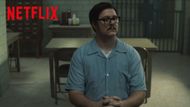
Edmund Kemper is likely America's most frightening killer. Between 1964 and 1973, he killed ten individuals—his grandparents, his mother, her friend, and six young women.
Standing 6'9" and weighing approximately 280 pounds, Kemper employed his size and dominating intellect to draw in and overpower his victims. His offenses included kidnapping, killing, dismembering, and engaging in necrophilia.
Strangely enough, he began by murdering his grandparents at 15, was sent to a mental hospital, released at 21, and subsequently hunted college coeds in the Santa Cruz region. His killing spree ended when he brutally killed his mother and her friend, then peacefully surrendered.
Kemper's case shocked the nation, not so much because his acts were horrific, but because he was so unnervingly cooperative afterwards. He'd talk freely to cops, providing chilling stats and peeks into his own twisted mind.
His unnervingly verbal and charming personality made him a goldmine for early FBI profilers attempting to crack the mind of serial killers.
Portrayal in Mindhunter
Kemper is the first serial killer the agents sit down with in the series, and his scenes are some of the most memorable. The show nails his eerie intelligence and unsettling calm, diving into the twisted relationship he had with his abusive mother and how that shaped his crimes.
It also highlights how Kemper became a crucial piece in the FBI’s efforts to understand what drives men like him to kill.
Jerry Brudos ("The shoe fetish slayer")

Jerry Brudos terrorized Oregon in 1968 and 1969, killing at least four women. His actions were motivated by a sick fascination with women's footwear and undergarments. Brudos kidnapped his victims, killed them, mutilated them, posed their bodies, and took pictures of them, keeping their shoes as horrific souvenirs.
His case was unusual due to the violent sexual content of his offenses and his practice of taking "souvenirs" off the bodies of his victims.
When he finally broke and admitted his crimes, his psychological assessment was a landmark study of sexually motivated serial killers.
Portrayal in Mindhunter:
The show captures Brudos perfectly—cold, casual, and completely unremorseful when he talks with the agents. The interviews led the team to delve further into how fetishes and paraphilias can drive violent behavior, shaping a central aspect of their evolving profiling strategies.
Richard Speck
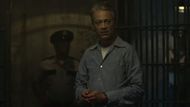
Richard Speck committed one of America's most horrific mass murders in 1966 when he broke into a Chicago townhouse and brutally killed eight student nurses one by one. Just one woman lived, hidden under a bed until he left.
The sheer viciousness and magnitude of Speck's crime stunned the nation. More astounding was his behavior later, as he wasn't sorry in the least, famously dismissing it by saying:
"It just wasn't their night."
Representation in Mindhunter:
Mindhunter borrows from actual prison tapes of Speck, bringing his ghastly words to life. His case is of crucial significance for the FBI agents while they probe the distinction between methodical and planned killers and killers such as Speck, whose violence is chaotic and not thoughtful.
Wayne Williams (Atlanta child murders)
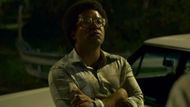
During 1979-1981, Atlanta was intimidated when at least 28 young Black children, teenagers, and young adults were killed. Wayne Williams was eventually arrested and convicted, albeit for killing two adults, not the child victims.
Even though he was connected by fiber evidence to multiple victims, there continues to be debate as to whether or not he actually was guilty of killing all (or even most) of the child victims.
The Atlanta Child Murders starkly highlighted racial and social divisions in the city. The murders were seen to be botched because the victims were predominantly Black and from poverty-stricken neighborhoods.
Williams's sentencing did nothing to stem the outrage—his case was re-examined in 2019 to search for new evidence.
Depiction in Mindhunter
Season two of Mindhunter delves further into the Atlanta case, showing the enormous pressure on the FBI and local police, and also the political nuances that obscured the case.
The series does not shy away from the uncomfortable question of whether Williams acted alone, or if another was able to escape murder.
David Berkowitz ("Son of Sam")
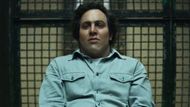
Between 1976 and 1977, David Berkowitz went on a shooting spree in New York City, having killed six and wounded seven. With a .44 caliber revolver, he shot women sitting in automobiles or reclining on the front porches of their homes.
Berkowitz famously claimed to be doing the bidding of a demon that had possessed his neighbor's dog—although he ultimately admitted that was all just a lie.
The "Son of Sam" attacks plunged New York City into terror. Berkowitz's strange, menacing messages to the police and newspapers added to the hysteria, making the case a media sensation.
His chilling mixture of random violence and odd conspiracy theories only made him the face of evil for an entire generation.
Portrayal in Mindhunter
Berkowitz is introduced in Mindhunter's first scenes and sets the tone for the rest of the series, but his full interrogation comes in season two. The series delves into his twisted claims of being under demon control and the extent to which his murders were horrifyingly random, understanding the real fear that nobody was ever truly safe.
William Pierce Jr.

William Pierce Jr., known as "Junior," was convicted of killing at least nine individuals in the Southeast, including a 13-year-old South Carolina state senator's daughter. His brutal killings and rape horrified residents of several states before he was apprehended in Georgia.
Pierce's case was a national news story, not just because of the violence itself but also because of the status of one of his teen victims.
The mix of rape, murder, and a politically connected victim made his crimes famous. He is currently serving a life sentence in prison.
Portrayal in Mindhunter
Even though Pierce does not appear in a scene where he is interviewed, the series includes him in a jarring fashion—a picture of him lounging in his prison cell with piles of junk food spread around him.
It is literally borrowed from an existing 1971 photograph. The series uses it to illustrate just how varied and unsettling the profiles of serial killers can be.
Elmer Wayne Henley Jr. (Houston mass murders)

Elmer Wayne Henley Jr. was an accomplice of Dean Corll, aka "Candy Man," in the Houston Mass Murders of 1970-1973. Together, they kidnapped, tortured, raped, and murdered at least 28 young men and boys.
Henley was not a mere observer but was an active participant in luring victims and participated in at least six of the murders. He ultimately betrayed Corll, shooting him dead and then informing on him to the police.
The Houston Mass Murders appalled the nation with their violence and scale. Henley's case was peculiar in that he was both a victim of manipulation by Corll and a calculating killer in his own right.
His case has been pivotal for criminologists trying to understand how young men are groomed and coerced into becoming killers themselves.
Portrayal in Mindhunter:
In the series, Henley sits down with the FBI’s Behavioral Science Unit, coolly downplaying how deeply he was involved. The show uses his interview to dig into the murky psychology of accomplices, highlighting how power, manipulation, and fear can pull someone into unimaginable acts, blurring the line between victim and perpetrator.
Monte Rissell
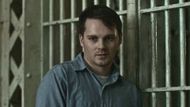
Monte Rissell began to kill when he was still a teenager. Between 1976 and 1977, in Virginia, he killed five women in his wickedly diverse fashion—blunt-force trauma, drowning, and stabbing.
At no point did he demonstrate any remorse. Rather, he tended to play the part of the actual victim, blaming his savage impulses for being the byproduct of his complicated relationship with his mother.
Rissell's situation was exceptional because of his age, the brutality of his crimes, and the complete lack of remorse. His personality made him an ideal initial suspect for the FBI as they attempted to figure out why young men became serial killers—and how the signs could be detected before it was too late.
Depiction in Mindhunter:
In the series, agents interview Rissell extensively. He is self-pitying and bitter, ranting incessantly about his mother. Through his case, the Behavioral Science Unit questions further what drives young killers, focusing on why knowing their backgrounds could be the solution to preventing further crimes.
Betty Jean Shade (Case profiled by John Douglas)

In 1979, Betty Jean Shade was murdered by her boyfriend, Charles “Butch” Soult Jr., and his brother after a heated argument. The crime was brutal and deeply personal.
When brought in, John Douglas and his team at the FBI’s Behavioral Science Unit built a psychological profile of the killer, pinpointing him as someone from a broken home, likely with a domineering mother and serious problems relating to women — a profile that fit Soult exactly.
This was one of the earliest legitimizations of criminal profiling and was remarkable. It showed how psychological insights could prove more than theory and actually help pinpoint violent crime suspects, making profiling an invaluable tool in modern investigations.
Portrayal in Mindhunter:
The series covers this case in its initial season, using it to illustrate that Holden and Bill's work was finally paying off. It highlights the actual impact their profiles had on solving crime, highlighting the importance of criminal psychology education.
